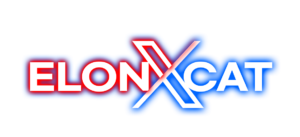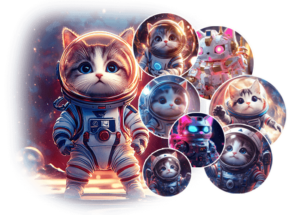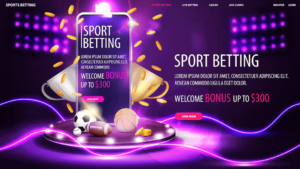
cosmeceuticals market
According to our latest study on “Cosmeceuticals market Forecast to 2028 – COVID-19 Impact and Global and India Analysis – by Application, Distribution Channel, and Age,” the cosmeceuticals market is expected to grow US$ 81,773.26 million by 2028 from US$ 45,916.66 million in 2021. It is estimated to grow at a CAGR of 8.7% from 2022 to 2028. The increasing demand for anti-aging products is driving the market. Moreover, a shift in the male grooming products and the introduction of innovative cosmeceutical products in the market are expected to boost the growth rate in the coming years. However, the stringent regulatory approvals and effect of the COVID-19 pandemic are hindering the cosmeceuticals market.
The demand for anti-aging products to prevent hair damage, age spots, uneven skin tone, dry skin, and wrinkles is on the rise, and a vast variety of anti-aging products entered the global market over the past few years. This, in turn, has created opportunities for new introductions and innovations in the cosmetic industry, thus, making manufacturers focus on active anti-aging-based skin products. Aging population, increasing consumer spending, and beauty consciousness are the other factors supporting the sales of anti-aging products.
Cosmeceuticals are products that have both cosmetic and therapeutic (medical or drug-like) effects and are intended to have a beneficial effect on skin health and beauty. Like cosmetics, they are applied topically as creams or lotions but contain applications that have an effect on skin cell function. In some cases, their action is limited to the skin surface (such as exfoliants), while others can penetrate to deeper levels, either enhancing or limiting normal skin functions. Cosmeceuticals are available “over-the-counter” (without prescription) and are generally used as part of a regular skin care regime to help improve skin tone and texture, pigmentation and fine lines.
Key factors that are driving growth of the market are increasing adoption of grooming and hygiene amongst aging population, and high demand during COVID-19 pandemic. However, security and privacy issues are expected to restrict the market growth during the forecast period.
The benign prostatic hyperplasic devices market is majorly comprised of top players L’Oréal S.A.; Beiersdorf Global; Croda International; Amway Corp.; Allergan; Unilever PLC; Johnson & Johnson; Procter & Gamble; Avon Products Inc.; Estée Lauder Inc.; Shiseido Company Limited; and BASF SE, among others.
Get FREE Sample Copy @
The companies listed above are implementing various strategies such as product launches, acquisitions, mergers, and partnerships, which have resulted in the company’s growth and, in turn, have brought about various changes in the worldwide market. Additionally, the companies have adopted several inorganic and organic strategies for accelerating their growth and improving their market position
Moreover, it has been observed that the demand is high among people aged 30-45 years. Over the past decades, the decreasing mortality rate has also given rise to the aging population worldwide. People want to retain their youthful appearance, which ultimately promotes the cosmeceutical market size globally. Further, the male grooming industry is also emerging as a key growth promoter in the cosmeceuticals market. There has been a pivotal shift in male pampering culture during the last decade. The share of male consumers in the sales of anti-aging and anti-acne products is increasing continuously, which is also expected to promote the overall growth of the cosmeceuticals market.
Further, anti-aging creams are most widely accepted as anti-aging products among the global population. The ingredients used in these anti-aging creams can lift the sagging skin below the eyes and on the cheek and neck areas. Excessive drying and loss of skin firmness and elasticity are some of the major signs of aging. The sunscreens plays an important role in reducing the signs of aging. Regular use of sunscreen is a crucial step to keep skin healthy and prevent age spots and discoloration. Along with this, the anti-aging night creams help fight fine lines and wrinkles and also help re-hydrate the skin.
Continuous growth in awareness among consumers regarding various age-related skin problems, such as fine lines, wrinkles, and dullness, is mainly driving the demand for anti-aging skin care products. The increasing aging population in various countries is also boosting the anti-aging skin care products market. Market players are focusing on various strategies to fulfill growing consumer demand. For instance, in July 2022, Clean K-beauty skincare brand Aloisia Beauty expanded its award-winning line by launching its new anti-aging & brightening Collection. The collection is powered by the science-backed benefits of over 76 vitamins, antioxidants, humectants, and anti-inflammatory ingredients.
The report segments the cosmeceuticals market as follows:
Based on Application, the cosmeceuticals market is segmented into skin care, hair care, oral care, and others. In 2022, the skin care segment is estimated to hold the largest market share and is anticipated to register the highest CAGR from 2022 to 2028. Based on distribution channel, the market is segmented into supermarkets/hypermarkets, online retail stores, convenience stores, specialist stores, and other distribution channels. The supermarkets/hypermarkets segment is estimated to hold the largest market share in 2022, while the specialist store segment is anticipated to register the highest CAGR from 2022 to 2028. Based on age, the market is segmented into pediatrics, teens, adults, and old age consumers. The adults segment is estimated to hold the largest share of the market in 2022, while the pediatrics segment is anticipated to register the highest CAGR during the forecast period.







